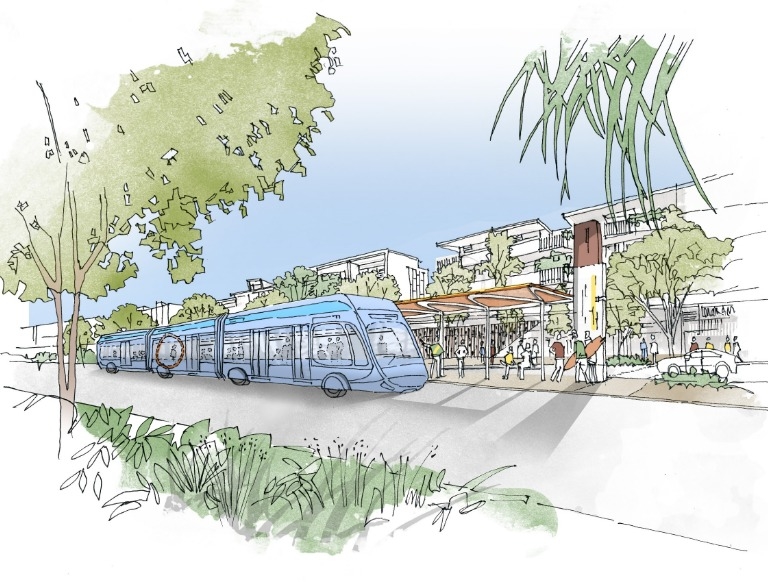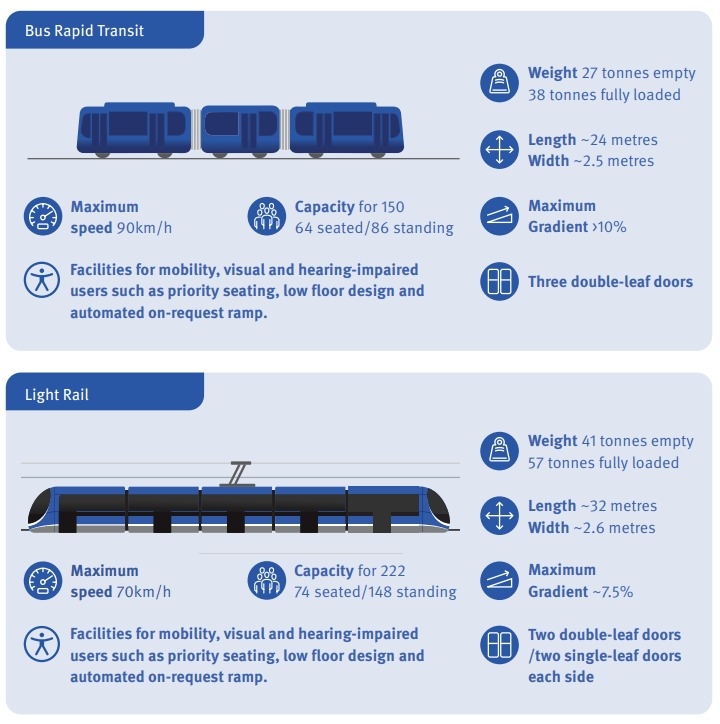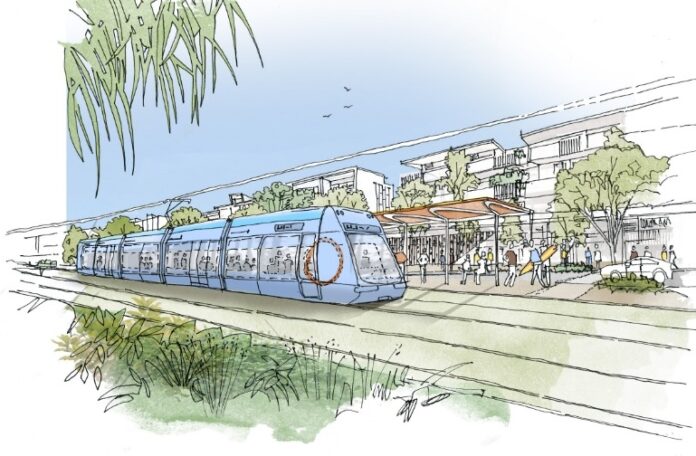A proposed Sunshine Coast Public Transport network has been narrowed down to two options.
The project, which is undergoing a business case study, is aimed at helping the region accommodate its rapidly growing population.
It includes improved public transport between Maroochydore and Sunshine Coast University Hospital at Birtinya (Stage 1, about 15km), with a possible extension to Caloundra (Stage 2, about 9km).
There are now two types of transit being considered – bus rapid transit and light rail – from a previous list of five options. The other three were wireless light rail, trackless tram and a quality bus corridor.
Bus rapid transit would involve buses running on rubber wheels within dedicated lanes, similar to Brisbane Metro, while light rail would include trains operating on a fixed track with power potentially drawn from an overhead line, similar to the Gold Coast.
Do you have an opinion to share? Submit a Letter to the Editor at Sunshine Coast News via news@sunshinecoastnews.com.au. You must include your name and suburb.
Bus rapid transit could include 24m-long vehicles with a capacity for 150 passengers (64 seated, 86 standing), reaching a maximum speed of 90km/h, with three double doors.
Light rail could include 32m-long trains with a capacity for 222 people (74 seated, 148 standing), reaching a maximum speed of 70km/h, with two double doors and two single doors on each side. The extent to which overhead wires may be required would be determined in part by the power requirements for the vehicle between charging locations.

A Mass Transit Options Analysis by Sunshine Coast Council in 2021 indicated the projects would cost more than $1b to build, and operations costs would run into the hundreds of millions, but would attract revenue from fares.
More accurate figures should be collated during the detailed business case that is expected to be completed by 2025.
A Department of Transport and Main Roads spokesperson said the two options were shortlisted after a “rigorous process” that considered factors including “transport outcomes, operations integration, employment and economic development, public amenity and social impact, and climate change and sustainability”.
“Further detailed assessments for each option are continuing to be undertaken, to help identify a preferred mode,” they said.
“Community feedback, obtained previously and through current consultation, has been and will continue to be, considered as part of this process.”

The spokesperson said other options could still be considered.
“With vehicle technologies continually evolving and several variations of vehicle types emerging within the industry, TMR will monitor the market to determine if other variations present suitable outcomes,” they said.
“For example, vehicles like trackless trams are a variation of bus rapid transit which operate on rubber wheels and follow line marking on the road surface.”
The spokesperson said whatever transport method was adopted would be free flowing.
“Feedback obtained through recent consultation showed that the community rated reliability as the most important factor for a future public transport system,” they said.
“The project will help achieve this through a dedicated right-of-way, which provides an exclusive separated route from the other road traffic, for the sole use of public transport.
“A right-of-way allows services to turn up regardless of traffic conditions or congestion, leading to improved frequency, greater punctuality and, ultimately, a reliable public transport system.”
A total of $15 million has been allocated for the project’s detailed business case, with the federal and state governments and Sunshine Coast Council each contributing $5 million.
Community feedback on the mass transit project is open until December 10 by clicking here.
Scroll down to SUBSCRIBE for our FREE news feed, direct to your inbox daily.





